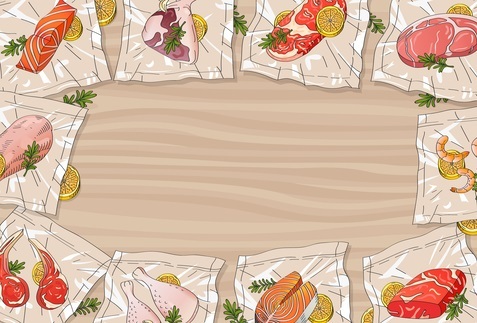
 Data Structure
Data Structure Networking
Networking RDBMS
RDBMS Operating System
Operating System Java
Java MS Excel
MS Excel iOS
iOS HTML
HTML CSS
CSS Android
Android Python
Python C Programming
C Programming C++
C++ C#
C# MongoDB
MongoDB MySQL
MySQL Javascript
Javascript PHP
PHP
- Selected Reading
- UPSC IAS Exams Notes
- Developer's Best Practices
- Questions and Answers
- Effective Resume Writing
- HR Interview Questions
- Computer Glossary
- Who is Who
Drying Mechanism in Bioprocess and Applications
Introduction
Drying is an essential unit operation in bioprocess engineering that involves the removal of moisture or water from a product. In bioprocessing, drying is a critical step because it helps to preserve the quality and stability of the product, prevent microbial growth, and enhance shelf-life.
Addressed below are the mechanism of drying in bioprocesses, including the different types of drying, and their applications in various industries.
Drying Mechanisms
The drying mechanism involves the transfer of moisture from a product to the surrounding environment through a process known as diffusion. Diffusion occurs as a result of the concentration gradient between the product and the surrounding air. The rate of diffusion depends on various factors, including the temperature, humidity, air velocity, and surface area of the product.
In bioprocesses, there are two main types of drying mechanisms, namely, convective drying and vacuum drying.
Convective Drying
Convective drying is a process that involves the removal of moisture from a product by the use of hot air. This method is the most common form of drying in bioprocessing because it is simple, cost-effective, and requires less time. Convective drying occurs in three stages, namely, the heating stage, the constant rate stage, and the falling rate stage.
During the heating stage, the product is heated to a temperature above its boiling point, which causes the moisture to evaporate. The constant rate stage occurs when the product is still wet, and the rate of moisture removal is constant. In this stage, the moisture is removed from the product surface through evaporation. The falling rate stage occurs when the product is nearly dry, and the rate of moisture removal decreases because the moisture is now trapped inside the product.
Convective drying is widely used in the food industry, particularly in the drying of fruits, vegetables, and grains. It is also used in the pharmaceutical industry to dry drugs, and in the chemical industry to dry solvents.
Vacuum Drying
Vacuum drying is a process that involves the removal of moisture from a product under reduced pressure. This method is commonly used in bioprocessing because it is gentler compared to convective drying, and it helps to preserve the quality and stability of the product. Vacuum drying occurs in two stages, namely, the heating stage and the drying stage.
During the heating stage, the product is heated to a temperature above its boiling point, and the pressure is reduced to a level that allows the moisture to evaporate. The drying stage occurs when the product is still wet, and the pressure is reduced further to enhance moisture removal.
Vacuum drying is widely used in the pharmaceutical industry to dry heat-sensitive drugs, and in the food industry to dry delicate products such as herbs and spices.

Applications of Drying in Bioprocessing
Below are some of the applications of drying in various industries.
Food Industry
The food industry is the largest user of drying technology, and it accounts for more than 60% of the global market share. Drying is used in the food industry to remove moisture from fruits, vegetables, grains, and meat products. Drying helps to preserve the quality and nutritional value of the food, prevent microbial growth, and enhance shelf-life.

Pharmaceutical Industry
In the pharmaceutical industry, vacuum drying is the preferred method of drying because it is gentler compared to convective drying. Vacuum drying is used to dry heat-sensitive drugs, such as proteins, enzymes, and vaccines. Freeze-drying is another form of vacuum drying used in the pharmaceutical industry, where the product is frozen and then dried under reduced pressure to remove moisture.
Chemical Industry
The chemical industry is another significant user of drying technology, and it accounts for approximately 20% of the global market share. Drying is used in the chemical industry to remove moisture from solvents, catalysts, and other materials used in the production of chemicals. Drying helps to enhance the stability and purity of the chemicals, prevent microbial growth, and ensure the quality of the final product.
In the chemical industry, convective drying is the most common form of drying. It is used in the drying of solvents, catalysts, and other materials used in the production of chemicals. Vacuum drying is used in the drying of heat-sensitive chemicals, such as pharmaceutical intermediates and fine chemicals.
Biotechnology Industry
The biotechnology industry is a rapidly growing sector that uses bioprocesses to produce biopharmaceuticals, enzymes, and other biological products. Drying is an essential step in bioprocessing because it helps to preserve the quality and stability of the product, prevent microbial growth, and enhance shelf-life.
In the biotechnology industry, vacuum drying is the preferred method of drying because it is gentler compared to convective drying. Vacuum drying is used to dry heat-sensitive biological products, such as proteins, enzymes, and vaccines. Freeze-drying is another form of vacuum drying used in the biotechnology industry, where the product is frozen and then dried under reduced pressure to remove moisture.
Conclusion
Drying is a critical step in bioprocessing because it helps to preserve the quality and stability of the product, prevent microbial growth, and enhance shelf-life. In bioprocessing, there are two main types of drying mechanisms, namely, convective drying and vacuum drying.
Convective drying is a process that involves the removal of moisture from a product by the use of hot air, while vacuum drying is a process that involves the removal of moisture from a product under reduced pressure.
Drying is widely used in various industries, including the food, pharmaceutical, chemical, and biotechnology industries. In the food industry, convective drying is the most common form of drying, while vacuum drying is used to dry delicate products such as herbs and spices.
In the pharmaceutical and biotechnology industries, vacuum drying is the preferred method of drying because it is gentler compared to convective drying and is used to dry heat-sensitive drugs and biological products. In the chemical industry, convective drying is the most common form of drying, while vacuum drying is used to dry heat-sensitive chemicals.
In conclusion, drying is an essential unit operation in bioprocessing that helps to preserve the quality and stability of the product, prevent microbial growth, and enhance shelf-life. The choice of drying mechanism depends on various factors, including the product, the industry, and the desired outcome.
As bioprocessing technology advances, it is expected that new and more efficient drying techniques will be developed to enhance product quality and improve efficiency.

